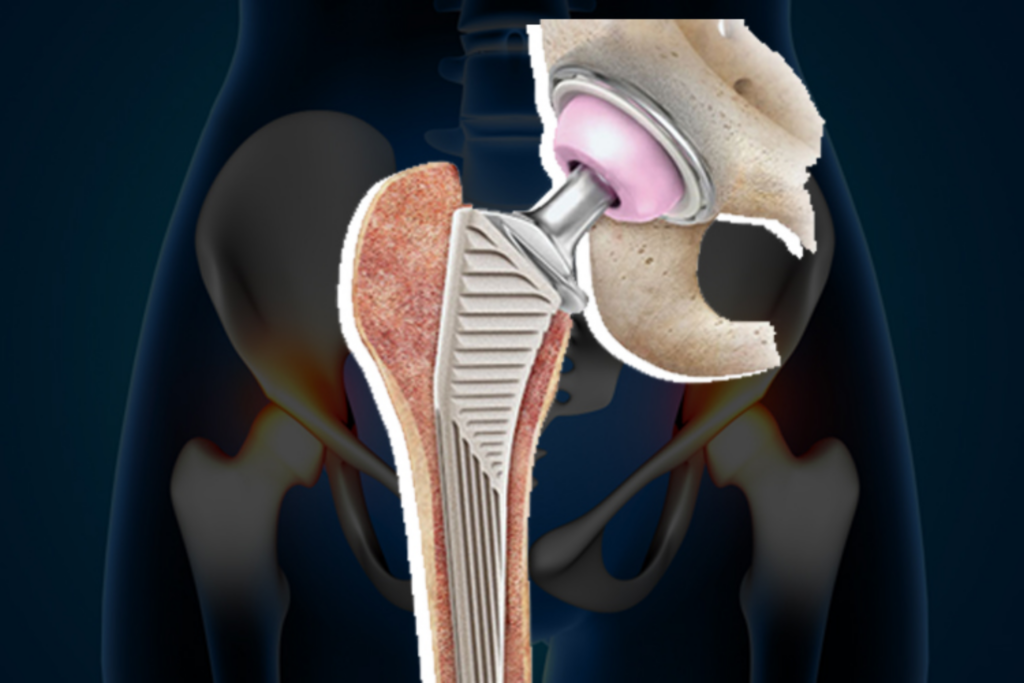
Hip replacement surgery is a life-changing procedure that restores mobility and reduces pain for patients suffering from severe hip joint damage. However, in some cases, hip implants can fail over time due to wear and tear, infection, loosening, or mechanical issues, requiring a hip replacement revision surgery. This complex procedure involves replacing or repairing the failed implant to restore proper function and mobility.
In this blog, we will explore the science behind hip replacement revisions, the reasons implants fail, and how surgeons like Dr. Saurabh Giri perform these intricate procedures to help patients regain their quality of life.
Why Do Hip Implants Fail?
Although modern hip replacements are designed to last 15-20 years or more, some factors can lead to implant failure, requiring revision surgery:
1. Implant Loosening
Over time, the artificial hip components may loosen due to daily wear and tear. This can cause pain, instability, and reduced mobility. Implant loosening is one of the most common reasons for revision surgery.
2. Infection
Post-surgical infections can compromise the success of a hip replacement. If bacteria infiltrate the implant site, it can cause swelling, pain, and implant instability, requiring surgical removal of the infected implant and replacement with a new one.
3. Fractures Around the Implant (Periprosthetic Fractures)
Falls, accidents, or weakened bones due to osteoporosis can cause fractures around the implant. Depending on the severity of the fracture, revision surgery may be needed to stabilize the joint and replace damaged components.
4. Wear and Tear of the Implant
Over time, the plastic or metal components of the implant may wear down, causing pain and inflammation. This can lead to osteolysis, where bone loss occurs around the implant, making revision surgery necessary.
5. Dislocation of the Hip Joint
Some patients experience hip dislocations after surgery, which can become a recurring issue. Surgeons may need to replace the implant with a more stable design to prevent future dislocations.
6. Metal-Related Complications
In metal-on-metal hip implants, wear can release metal particles into the bloodstream, leading to tissue damage and systemic health issues. Revision surgery is required to replace the faulty implant with a safer alternative.
How Surgeons Fix Failed Hip Implants
Hip replacement revision surgery is more complex than the initial procedure due to factors like bone loss, scar tissue, and the need to remove damaged components. Here’s how orthopedic surgeons approach the procedure:
1. Preoperative Planning with Advanced Imaging
Before surgery, orthopedic specialists use X-rays, CT scans, and MRI scans to assess the condition of the implant, bone structure, and surrounding tissues. This helps determine the best surgical approach and implant choice for the patient.
2. Removal of the Failed Implant
Surgeons carefully remove the damaged or loose implant while preserving as much healthy bone as possible. This step is critical because bone loss from previous surgeries can make it challenging to secure a new implant.
3. Bone Grafting to Strengthen the Hip Joint
In cases where the bone has deteriorated due to implant loosening or wear, bone grafting is performed to restore bone strength. Bone grafts can be taken from the patient’s own body (autograft) or a donor source (allograft).
4. Insertion of a New, More Durable Implant
After preparing the hip socket and femur, the surgeon inserts a new implant with improved stability and longevity. Modern implants feature advanced materials like ceramic, highly cross-linked polyethylene, and titanium, which offer better wear resistance and long-term success.
5. Soft Tissue and Muscle Repair
The surrounding muscles, tendons, and ligaments are repaired to ensure the new hip joint functions correctly. This helps prevent dislocation and enhances mobility post-surgery.
6. Post-Surgical Care and Rehabilitation
After revision surgery, patients require physical therapy and rehabilitation to regain strength, mobility, and flexibility. Recovery time varies depending on factors like age, overall health, and the extent of the revision procedure.
How Modern Technology Enhances Hip Revision Surgery
Advancements in orthopedic technology have significantly improved the outcomes of hip revision surgeries. Here are some innovations that surgeons use:
- 3D Printing: Custom implants tailored to a patient’s anatomy for better fit and longevity.
- Robotic-Assisted Surgery: Enhances precision in implant placement, reducing complications.
- Minimally Invasive Techniques: Smaller incisions and less tissue damage for faster recovery.
- Smart Implants: Future developments include implants that provide real-time data on wear and tear.
Summary
Hip replacement revision surgery is a highly specialized procedure that restores mobility and reduces pain for patients with failed hip implants. Whether caused by loosening, infection, fractures, or wear and tear, revision surgery requires expert planning, advanced surgical techniques, and cutting-edge technology to ensure long-term success.
For those experiencing complications from a hip replacement, seeking expert care is essential. Helios Orthojoint is a leading clinic specializing in advanced orthopedic treatments. Dr. Saurabh Giri, a highly experienced orthopedic doctor and surgeon, has successfully performed numerous hip revision surgeries, helping patients regain their mobility and quality of life. He is the best orthopedic doctor in Pune, known for his expertise and commitment to patient care.
If you are facing hip implant issues and need a consultation, visit Helios Orthojoint today and take the first step toward a pain-free, active life!




